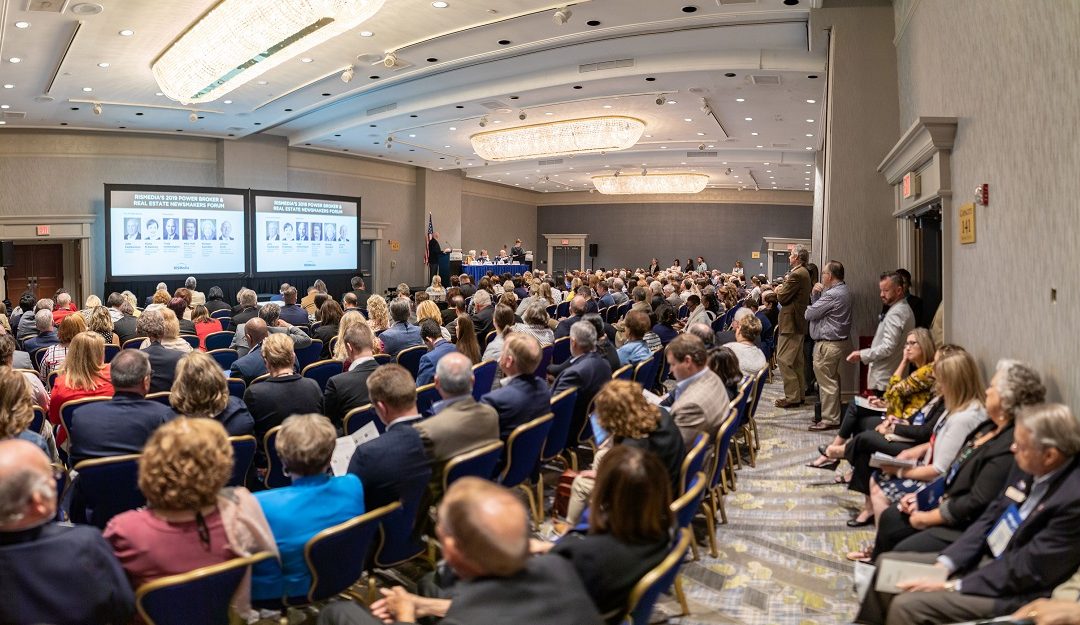The seas of real estate are constantly churning in anticipation of the next big disruptor, ready to release a sudden wave of innovation that can rapidly upend the marketplace for those who are not prepared. This year at the 2019 REALTORS® Legislative Meetings and Trade Expo in Washington, D.C., held from May 13-18, whispers of challenges as a result of disruption echoed throughout the week. The topic was discussed in-depth to a standing-room-only audience at RISMedia’s Power Broker and Real Estate Newsmakers Forum “Are You Ready for the Next Wave? Mastering Market, Tech and Competitive Challenges.”
Even the most prolific real estate brokerages need to have strategies in place if they are to thrive in the face of these challenges. Forum moderator John Featherston, RISMedia CEO, founder and publisher, dove into these approaches, asking the panel if they’ve “felt the constant change and innovation.”
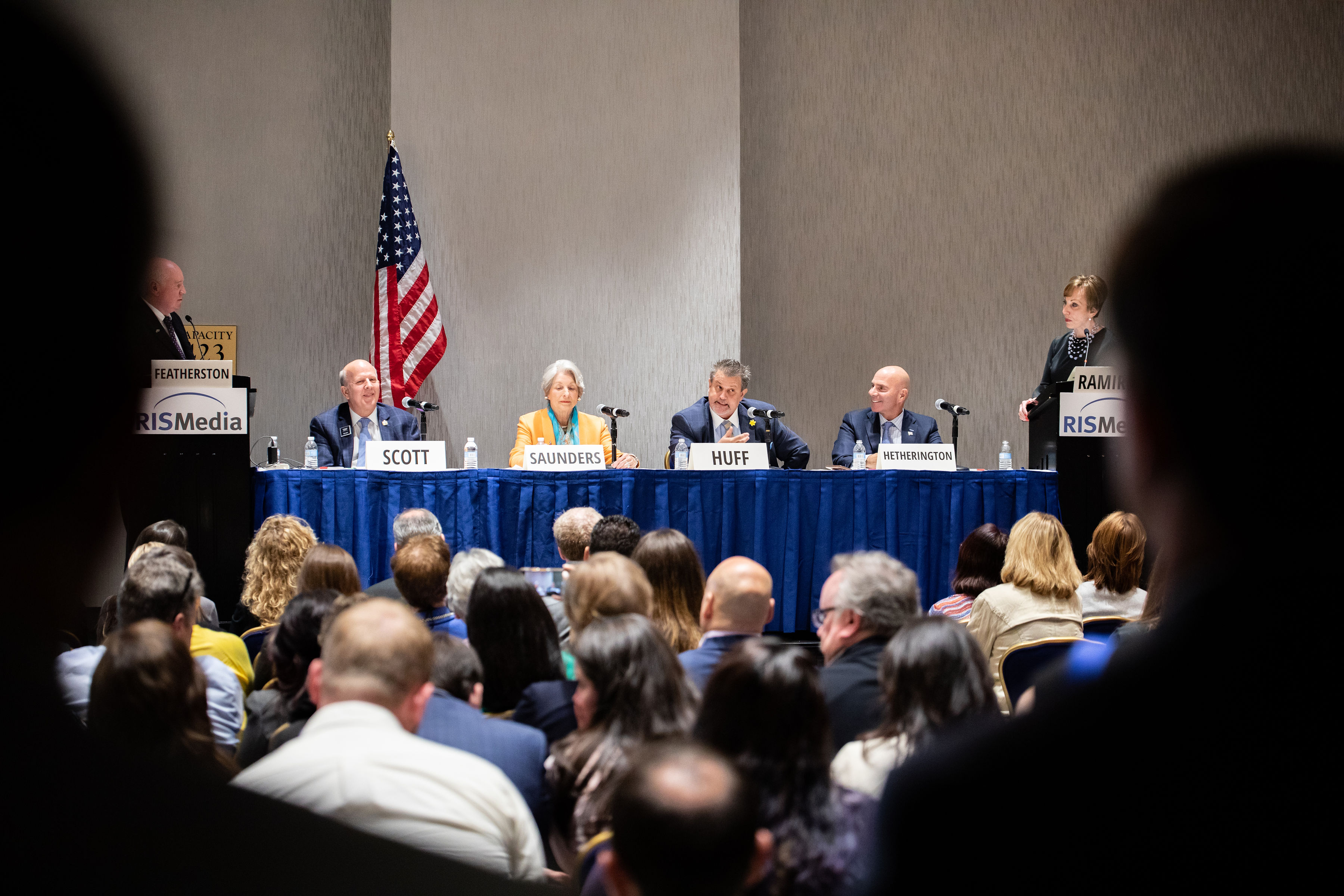
(L to R) John Featherston, RISMedia; J. Lennox Scott, John L. Scott Real Estate; Michael Saunders, Michael Saunders & Company; Mike Huff, Berkshire Hathaway HomeServices Anderson Properties; Todd Hetherington, CENTURY 21 New Millennium; Diane Ramirez, Halstead (Credit: AJ Canaria of PlanOmatic)
“Has it affected all of you? Is it affecting your neighborhoods, your prospects?” he inquired. “How are you assimilating to this new environment?”
According to Diane Ramirez, co-moderator of the forum and CEO and chairman of Halstead, it has nothing to do with the current environment, but rather maintaining an edge with innovation at all times.
“It has to do with our growth and our need to make certain that Halstead stays fresh and relevant,” she said.
All panelists agreed that the way to sustained success is by sticking to foundational beliefs.
Lennox Scott, CEO and chairman of John L. Scott Real Estate, said that while everything continues to change, “the core of our business stays the same, and that’s the relationship between our agents and their buyers and sellers.”
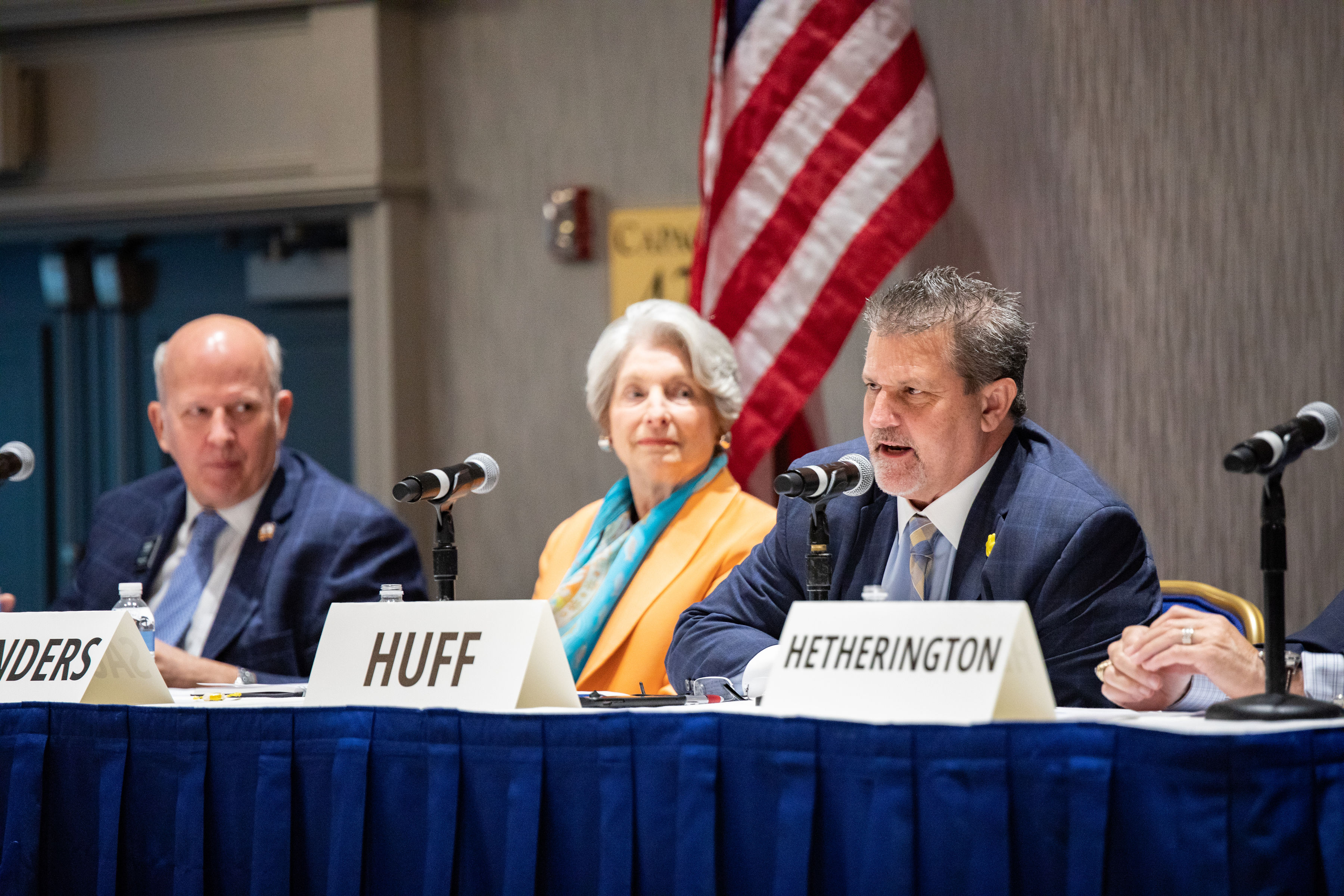
Credit: AJ Canaria of PlanOmatic
CEO and Founder of Michael Saunders & Company Michael Saunders looks past the “shiny new objects,” focusing on relationships as a pillar, as well.
“I’m a pretty back-to-basics gal—I’m foundational. I don’t think this is rocket science, although the technology companies make it sound that way,” said Saunders. “We are in a relationship business. That’s the foundation of who we are. The consumer-REALTOR® relationship remains the same no matter what happens.”
It can be difficult to stay true to the business without feeling threatened by the technology and discount amenities iBuyers and other industry disruptors are flaunting. However, Todd Hetherington, CEO of CENTURY 21 New Millennium, believes it is important that today’s brokers “do not fear change and do not fear the competition” if they want to succeed.
“Embrace it,” said Hetherington. “We have to know inside-out what our strengths and our weaknesses are. Learn what it is we can be doing better. Getting back to basics is critical.”
Without fear, REALTORS® can use the increased competition to continue growing their own business and providing a value proposition that is unique to the market.
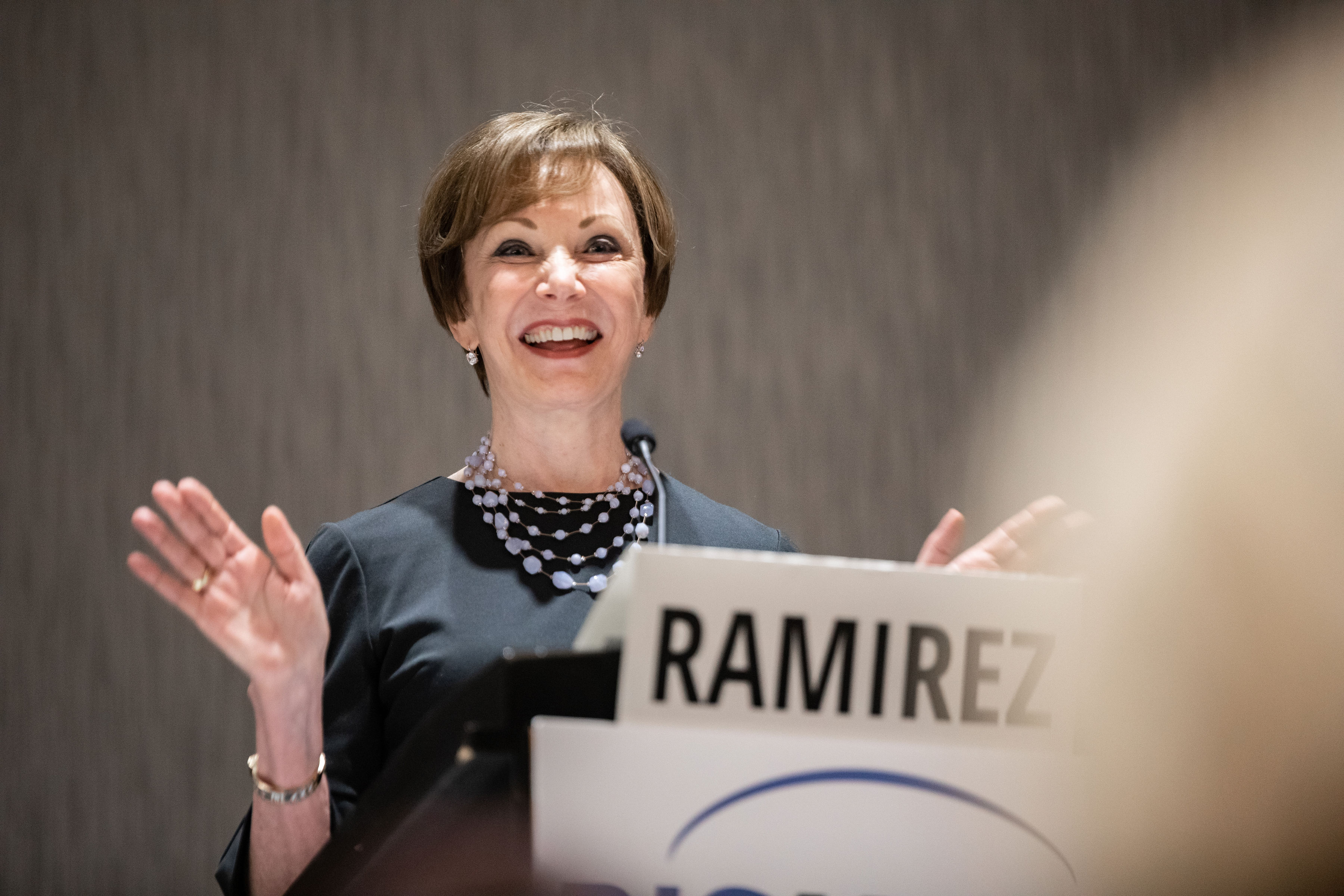
Diane Ramirez, chairman and CEO of Halstead, co-moderated the session. (Credit: AJ Canaria of PlanOmatic)
“All these companies have energized us,” said Scott. “They have taken us up to a higher level.”
While the new normal is back to basics, Featherston reminded brokers that it doesn’t necessarily mean they should go back to doing what they did in 1990 or 1999. Blending tradition with innovation for a more modern approach will, instead, help to edge out the competition.
Who are the biggest competitors in today’s disruptive real estate world? According to Mike Huff, broker/owner of Berkshire Hathaway HomeServices Anderson Properties, brokers should point the finger at themselves first.
“The biggest competitor every day is yourself,” he said.
Hetherington agreed, stating “I think we need to get over ourselves and get out of our own way.”
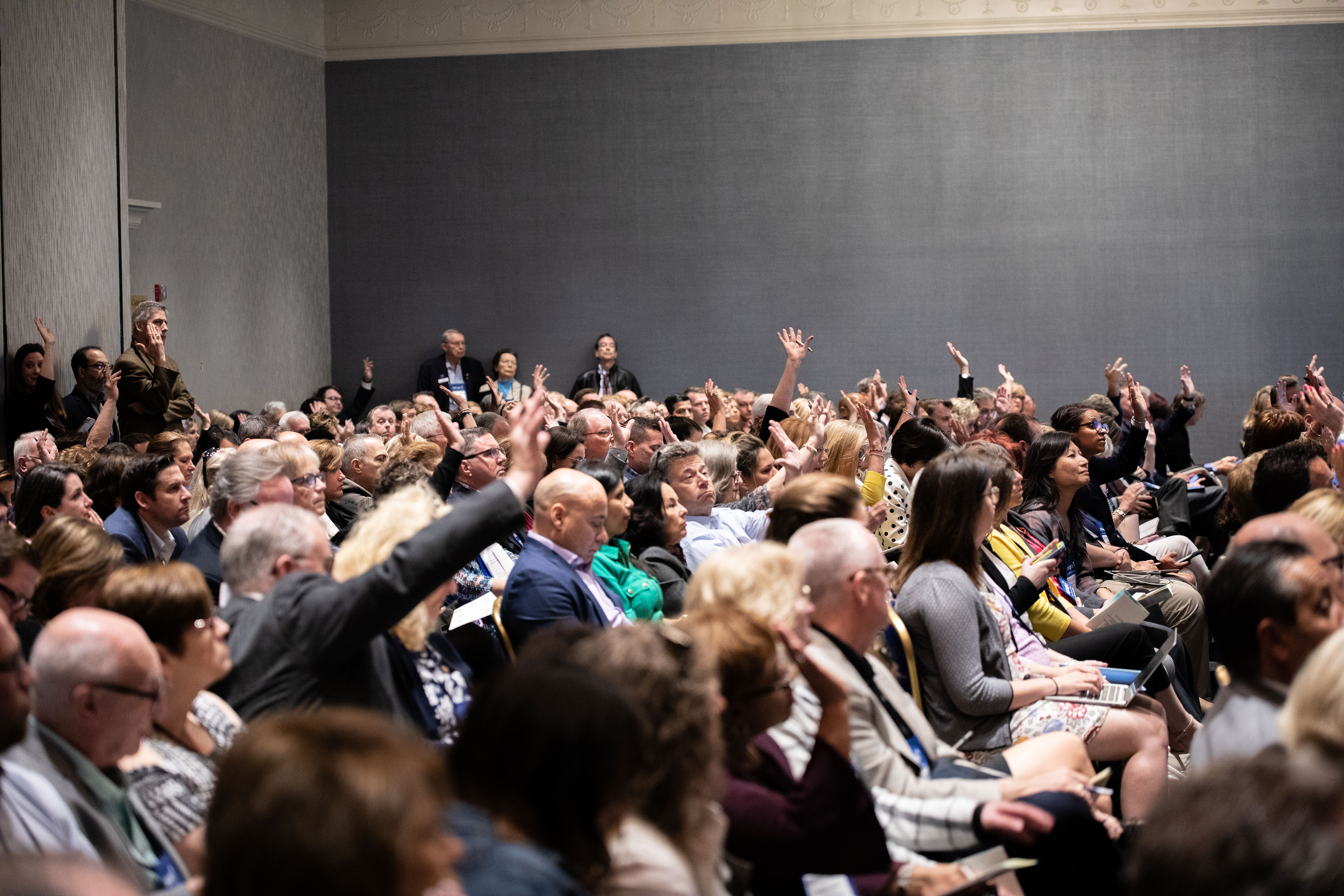
Credit: AJ Canaria of PlanOmatic
That begins by focusing on the true client relationship—that of the broker and agent, according to Huff. Productivity is key, and not every agent is right for the brokerage.
“I can’t tell you how many agents do not follow up with people no matter how many leads we give them,” said Huff. “If they don’t follow up, they’ll never be successful.”
That’s where culture comes in. Huff said everyone has a distinct way of doing things, and that can bring in a value that today’s disruptors cannot provide, as well as help train and retain productive agents.
“What works for me won’t work for most people,” he said. “We forget that culture is developed and built, and you’ve got to get everyone to buy into it. These disruptors that are out there are selling the ‘sizzle,’ but they’re not selling the meat.”
For Ramirez, it’s all about staying regional in order to maintain relevancy and create that close-knit community agents and brokers value.
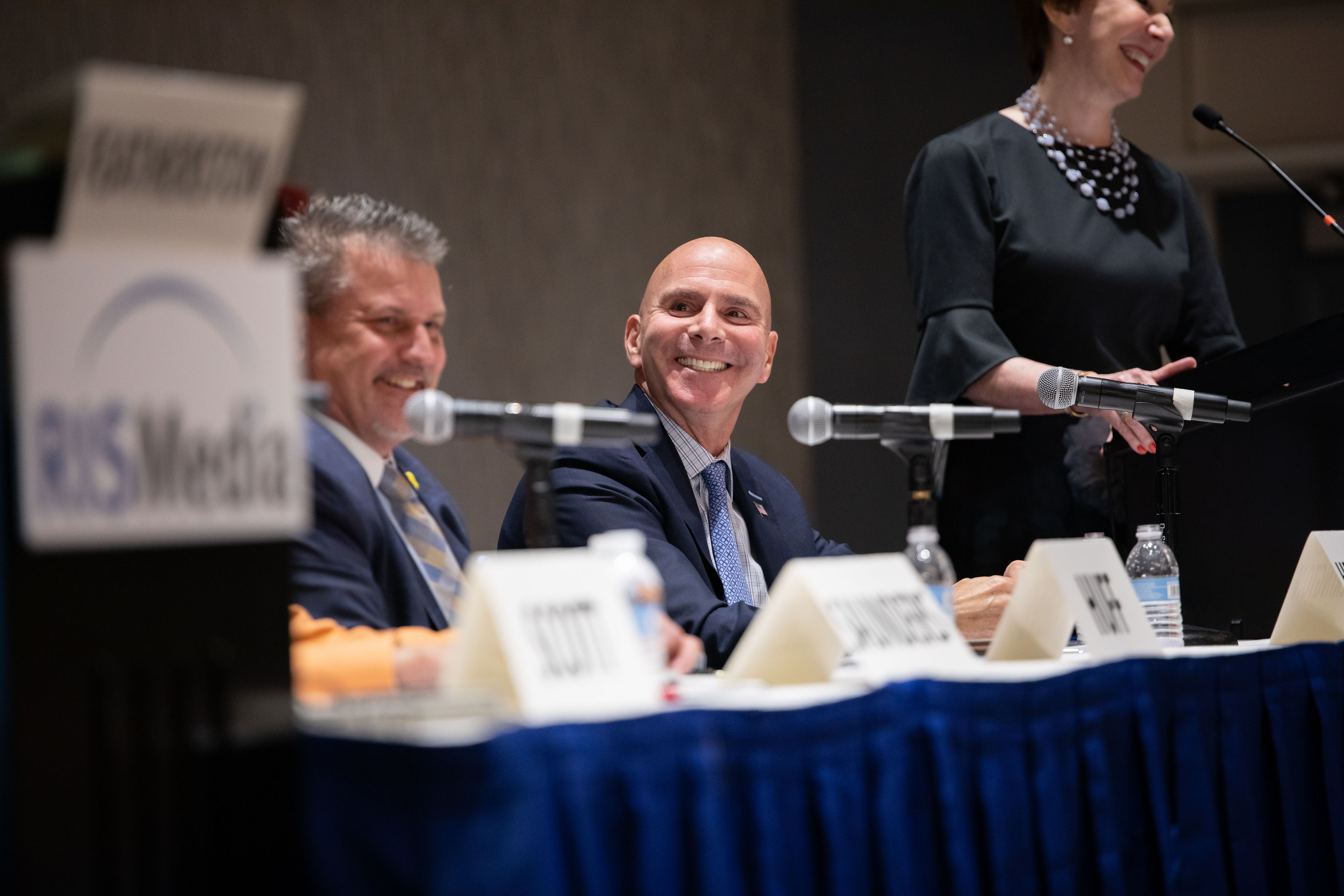
Credit: AJ Canaria of PlanOmatic
“I can go into any of my 38 offices and I know those agents by name,” said Ramirez. “The further away you move from your core market, the less you can have that culture.”
Scott also stressed that the broker-agent relationship must be nurtured, with plenty of avenues for self-improvement and growth.
“We’re a successful company for brokers and for top producers,” said Scott. “We have vision group meetings, we are talking about industry trends and we bring our top producers together in mastermind groups.”
Regardless of strategy, the key to staying ahead of innovation and maintaining a competitive edge is continuous growth and adapting to the current environment.
“There’s always an opportunity to innovate,” said Saunders. “It has to be a part of your DNA—part of your ‘why’ in your business.”
“Look inward,” Featherston emphasized. “You are the disruptors. You are the innovators.”


